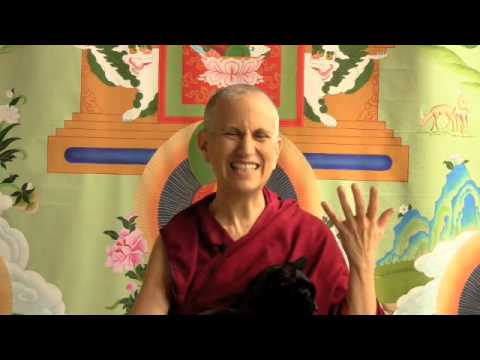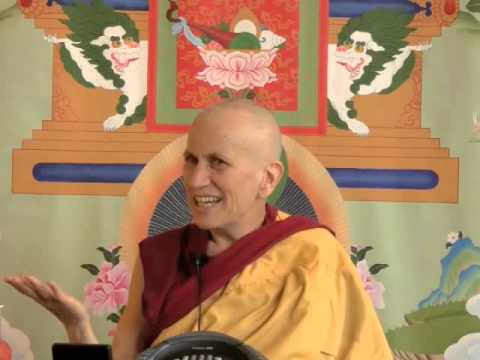Six root afflictions: View of the extremes
Stages of the Path #106: The Second Noble Truth
Part of a series of Bodhisattva's Breakfast Corner talks on the Stages of the Path (or Lamrim) as described in the Guru Puja text by Panchen Lama I Lobsang Chokyi Gyaltsen.
We’ve been talking about these six root afflictions that are the chief causes that keep us in cyclic existence, and we just started talking about the sixth one: afflicted views. There are five kinds of afflicted views.
Yesterday we talked about the “view of a personal identity,” which is the view that believes that there is a real, solid person here. This also fits in with ignorance. The view of a personal identity looks at the conventional self and holds that to be substantially existent or holds it to be inherently existent. Depending on the tenet system they say different things, but this is the belief that keeps us bound in cyclic existence.
The second view is the “view of the extremes,” and it is the view that looks at the I that is grasped by the first afflicted view and thinks that that I or that “self” is either an eternal soul or “self” that is going to continue on infinitely, eternally, or that being inherently existent or substantially existent, at the time of death the “self” is just going to cease completely and the person simply doesn’t exist anymore.
This second view is the one that is called “extreme views” because it’s either absolutism or nihilism. Absolutism believes that the person is a solid thing that never changes in any way, that there’s a soul or a supreme self. Nihilism thinks that at the time of death there’s nothing. Both of those are extreme views because in actuality the person is changing moment by moment. There isn’t any kind of findable self that we can latch onto. And yet the self does conventionally exist in that it is a mere label given to the aggregates. So, there is a continuity of the person without there being a findable person.
This is very hard for us to grasp because we always like to cling onto things, but this is where I think the idea of a river comes in. We say the Mississippi, and yet the Mississippi is completely different at all its different points. There’s no one Mississippi River that is solid and concrete at each particular point, and yet we do say the Mississippi goes from—where does it start—Minnesota, Iowa, and then down through Missouri, and it doesn’t even touch Mississippi, does it? It goes out to the ocean through Louisiana. That’s the wrong label! [laughter] Does it border Mississippi? Yes, it flows along Mississippi.
You can see that it’s not one solid, concrete thing. It’s something that changes. There’s a continuity, yet there’s nothing findable we can identify. It’s the same thing with the person. And in that way it’s why those two extreme views are incorrect, why they’re called afflicted views.
You can see how holding either one of those afflicted views can get us in trouble. If we hold an absolutist view that there’s some kind of eternal self, then what we postulate is the path to enlightenment is going to be very different. What we postulate is the path to liberation is going to be very different than if you have a Buddhist view, because if there’s a creator that created this immutable self then we have to please the creator.
Or if we have a nihilistic view that the person just simply totally ceases to exist at death, then we think, “Let’s do whatever we want, whatever feels good, as long as we don’t get caught,” because there’s not going to be any consequence later on of my actions now. Those kinds of views can act as the underlying basis for a lot of harmful actions.
Venerable Thubten Chodron
Venerable Chodron emphasizes the practical application of Buddha’s teachings in our daily lives and is especially skilled at explaining them in ways easily understood and practiced by Westerners. She is well known for her warm, humorous, and lucid teachings. She was ordained as a Buddhist nun in 1977 by Kyabje Ling Rinpoche in Dharamsala, India, and in 1986 she received bhikshuni (full) ordination in Taiwan. Read her full bio.


